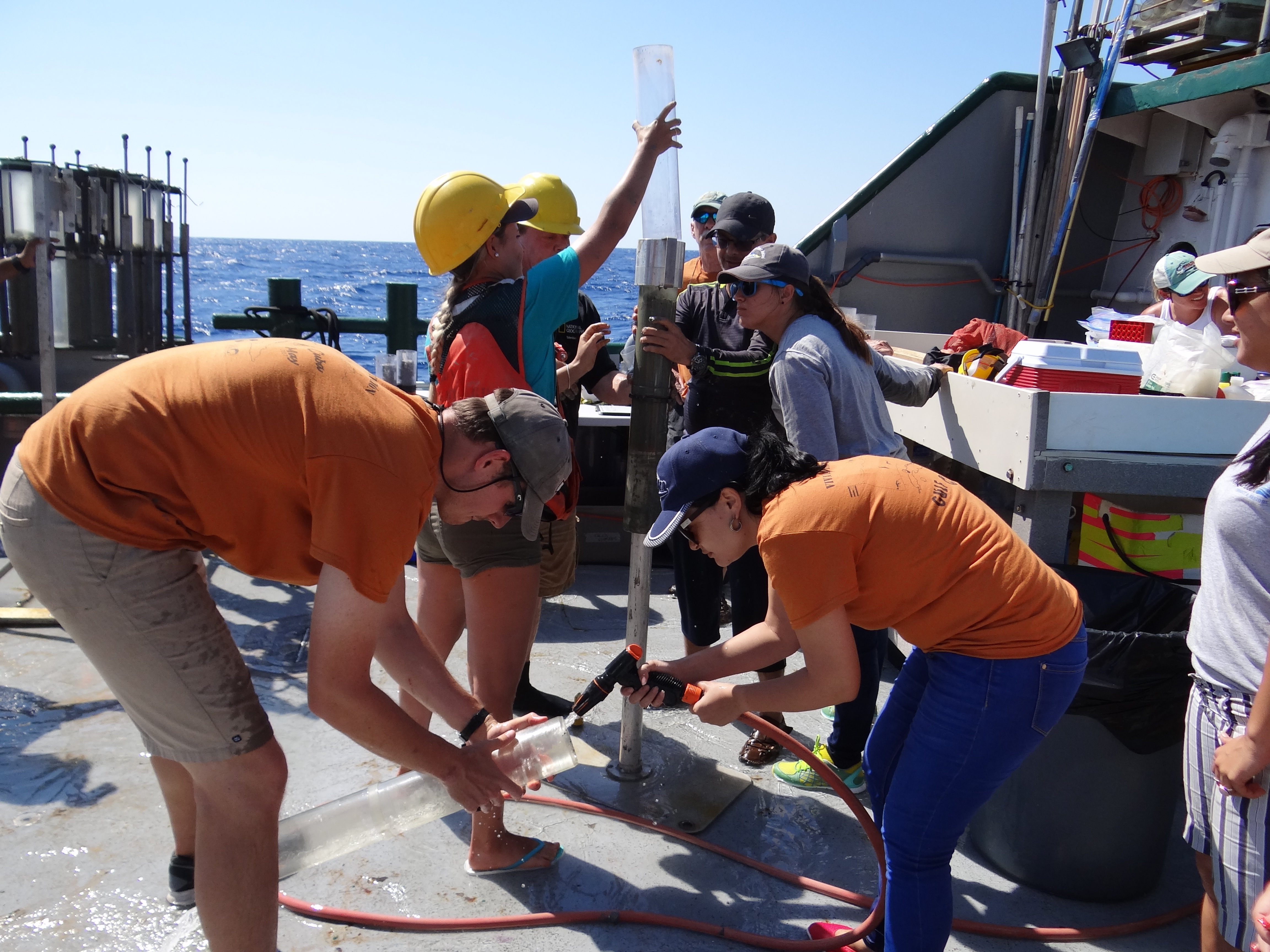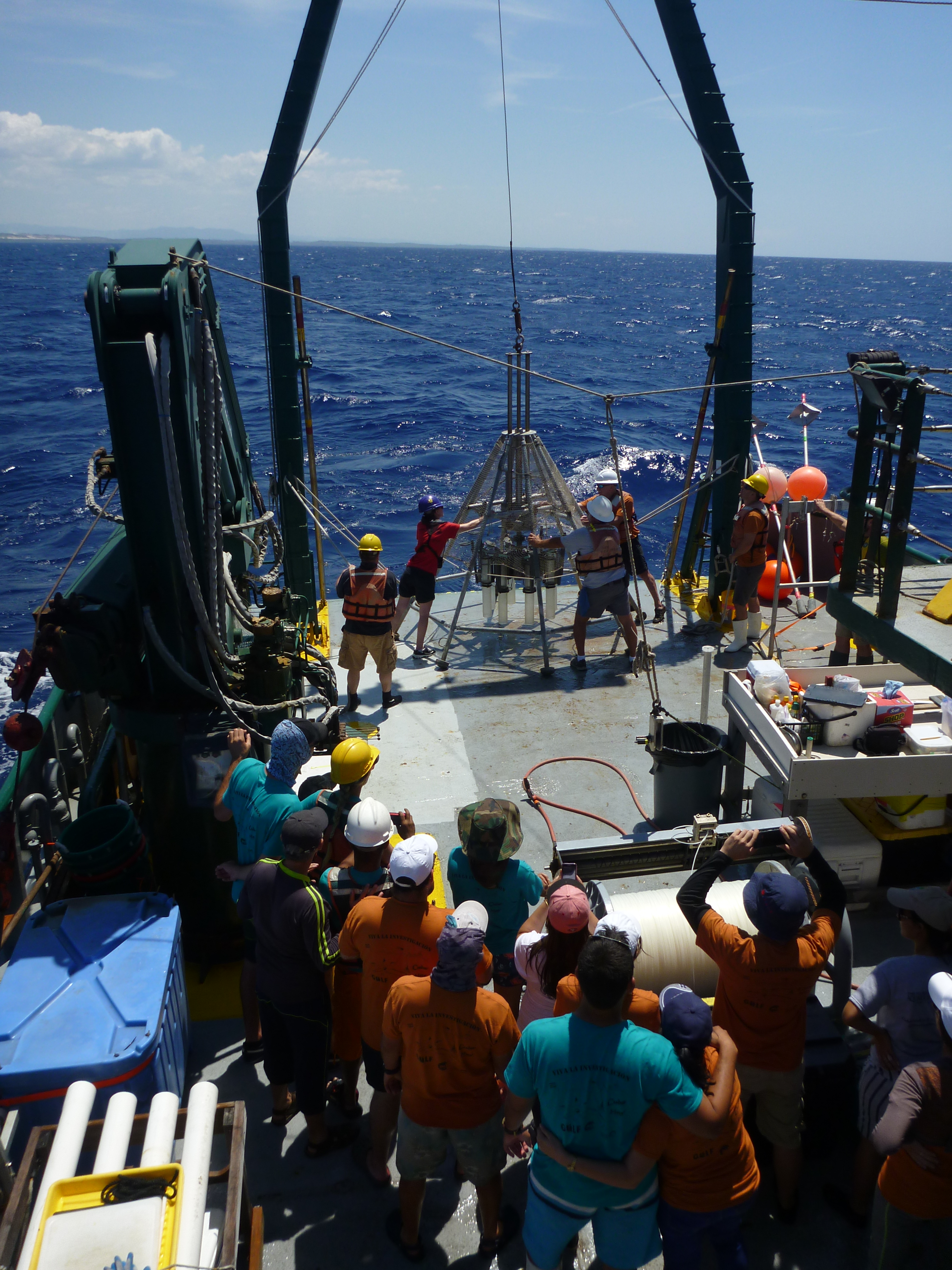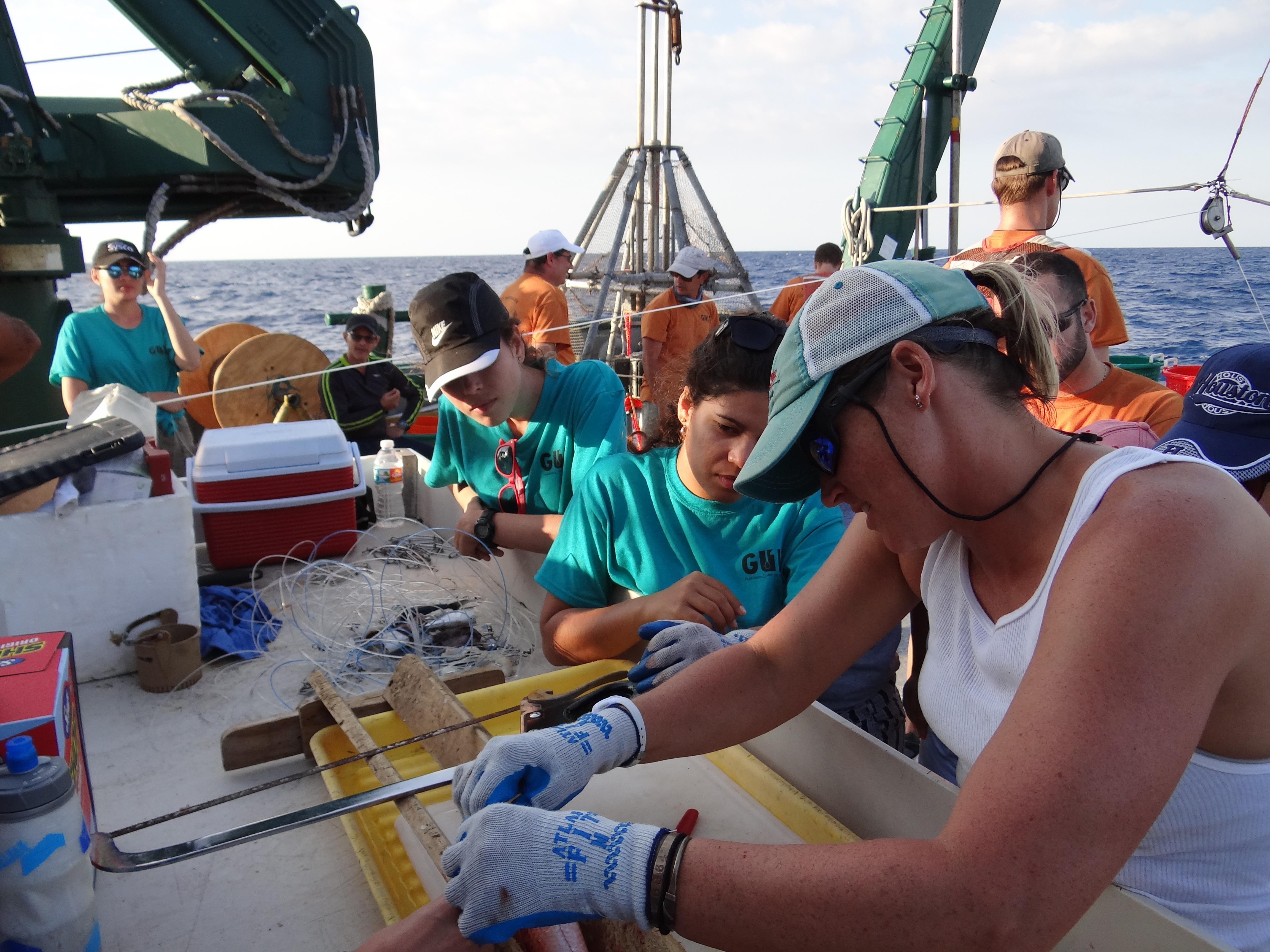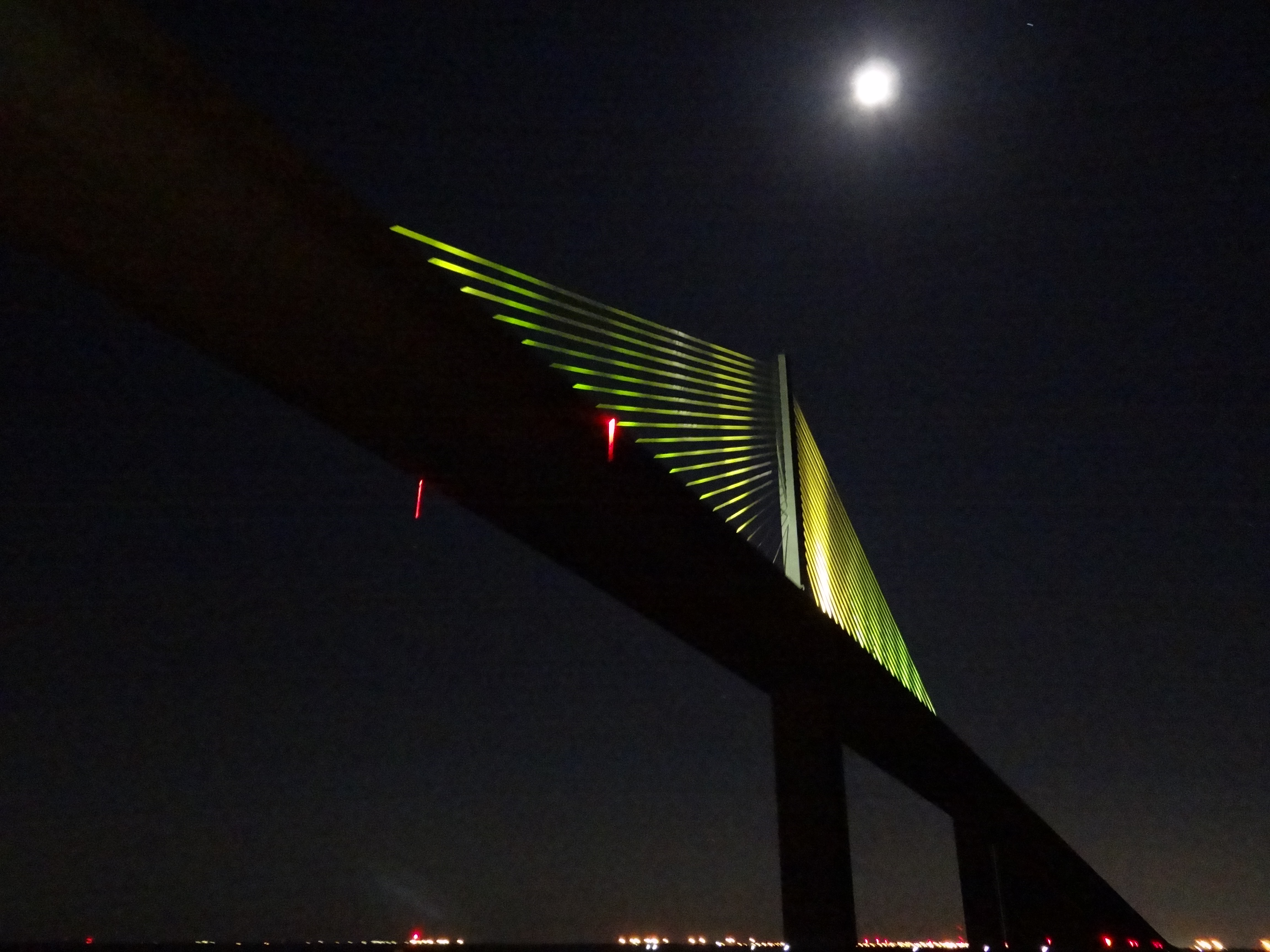R/V Weatherbird Log-Education Day-Ben Prueitt
USF Marine Science | Outreach & Operations
Making expectations for this cruise was difficult, on top of me having only one leg of a Mud & Blood cruise under my belt, a collaborative cruise to Cuba has not occurred in 50 years. I was most excited to meet and interact with Cuban researchers, practice my Spanish, and share perspectives of studying shared Gulf waters. For Americans, Cuba has always been this ‘forbidden fruit’, while the history between our countries has been controversial or cold, I quickly learned the people are warm and welcoming, respectful, and curious about research and cultural differences.
 Ben helps to clean a coring tube during the Education Day.
Ben helps to clean a coring tube during the Education Day.
A majority of my focus and preparations for the cruise was planning to host 21 Cuban graduate students for a day on the R/V Weatherbird II. We were anticipating what the students might want to learn, but hesitant about having about 40 research on board while trying to core and fish (herding cats always comes to mind in these situations). The purpose of this education day was to connect U.S. and Cuban researchers in the shared waters of the Gulf through hands-on research.
The students came from institutions across the island in different phases of their research: some were just starting their M.S. degree, others close to completing their PhD. They were all incredibly interested to help the research operations or learn more about the way we answer our research questions using certain equipment. They boarded the Weatherbird around noon and as we cleared the port officials, the science party tripled as the teal or orange cruise t-shirts were the fashion of the day.
The Sediment Coring & Fishing

A few miles from shore, we were already in 1,000m water depth thanks to the narrow shelf of northwest Cuba. With somewhat rough seas, we deployed and retrieved the multicore with success. The cores made it to the transfer rack and the normal processing began, except with more explanation of the layering, sedimentation, and post-analysis of each of the cores.
Following the coring activities, the fishing team prepared to deploy 200 hooks for a longline set. Excitement rose while the hooks went out. As repetitive of a process as setting line is, the research and lifestyle discussions continued across the ship.
Of the 200 hooks of this first set: one fish. A Queen Snapper came aboard and a flock of teal and orange shirts followed as Amy Wallace explained the dissection process and what studies will come of the liver, muscle, bile, and otoliths taken from the next 16 days of the expeditions.
 The students were all looking to get their hands dirty. Feel the cool water from the cores. All looking for a way to help, but with this many people on board, there is only so much that needs to be done. In conversations with the students, many had never been on a ship this size, nor been to sea to study the ocean like this.
The students were all looking to get their hands dirty. Feel the cool water from the cores. All looking for a way to help, but with this many people on board, there is only so much that needs to be done. In conversations with the students, many had never been on a ship this size, nor been to sea to study the ocean like this.
While sharing their research projects, I realized how adaptive and opportunistic they were regarding their research possibilities. Their limited technologies do not prevent them from studying what is important to them and they find ways to answer their research questions.

I’m very fortunate to have traveled with the Weatherbird, regardless of my brief stay on board. Interacting with the students and hearing of their research and goals was the highlight of the trip. I found it inspirational to find other Gulf-natives who share the same affinity to the shared waters of the Gulf as I do.


